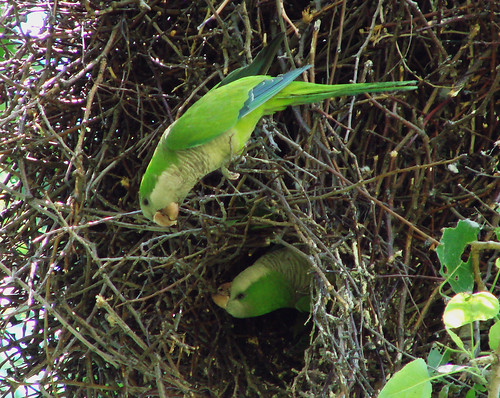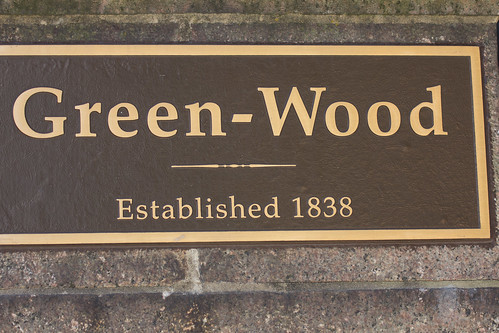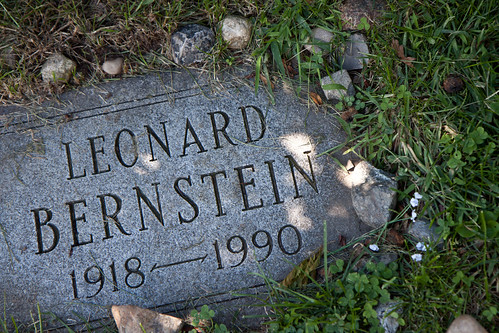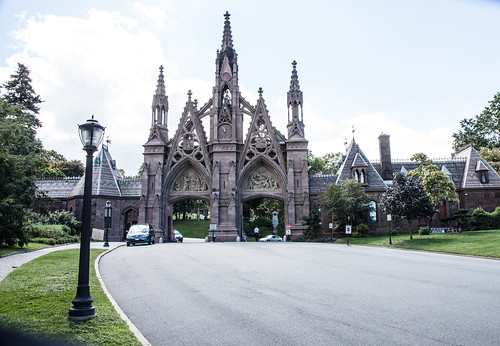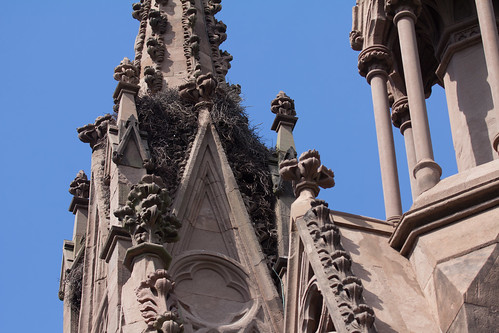My daughter Katie lives in Brooklyn, and I love when I get
to visit her. Not only is she a wonderful person in her own right, but also when
I’m at her place, I get to eat real New York bagels and see cool urban birds. My
favorite is the Monk Parakeet. I often hear them while I’m in Katie’s
apartment—they’re loud, their voices carrying over all the urban sounds. And
they’re particularly easy to see and hear in the famous Green-Wood Cemetery.
That’s where Leonard Bernstein is buried. I originally wanted to go there to
find his grave. But even when I found it, I ended up spending most of my time there looking at Monk Parakeets.
This is the only parrot species in the world that doesn’t
nest in cavities—colonies of them build big “apartment houses” from sticks. In
Green-Wood Cemetery, these big nests are easy to spot on the entrance gate and
nearby structures.
Some people seem mystified why the cemetery management
doesn’t have problems with them as they did with the pigeons that had been
there before the parakeets moved in. A few weeks ago, a science journalist
contacted the Cornell Lab of Ornithology wondering about just that. She wrote
that someone at the cemetery
...mentioned that this was a better situation because pigeon poop is quite acidic, and it was corroding the limestone of the gates. Parrot poop is (apparently?) less acidic, and thus having the parrots live there was a lot better for the gates. I'm trying to understand whether there is any reason to suspect that this is true. I wondered whether anyone at the Cornell Lab could talk to me about the pros and cons of pigeon versus parrot poop.
I’ve developed something of a reputation as the bird shit
dropping queen, so the question was sent on to me. I couldn’t find any studies
comparing pH of any birds’ droppings. That would be easy enough to test in any
high school science lab, but just about all bird droppings are acidic, because the white part is composed of uric acid excreted by their
kidneys. I suspect the corrosion issue from pigeons is due to more about the
pigeon’s natural history than just the acidity of their poop.
I answered that the
parrots I've worked with produce noticeably drier droppings than pigeons do.
Parrots don't drink as much and have a more seed-based diet. And those wet pigeon droppings dry from the outside in, the part directly in contact with the substrate remaining wet for hours or days, corroding the substrate. Parrot droppings dry much more quickly.
And at least as important are those enormous stick nests that the
parrots build. Their droppings collect on the sticks, not the architectural structures
beneath. Pigeons build their flimsy nests directly on buildings and other
structures, and loaf around near the nests, pooping wherever they happen to be
standing. They don't clean up after their chicks' droppings, either—all that wet
poop corrodes whatever it's on.
Monk Parakeets are native to both temperate and subtropical
areas of South America, from central Bolivia and southern Brazil south to
Uruguay and central Argentina. Down there, large scale tree planting has
allowed them to spread beyond their natural range into large areas of the
Pampas grasslands. They didn’t spread naturally up here—they were
brought to North America and Europe by the pet trade, sold as Quakers.
Escaped birds established wild populations, which are especially abundant in
southern states, but have also cropped up in Chicago and New York. Now in many
states it’s illegal to sell or breed them because of fears that these escaped
birds can damage fruit crops, though there is little evidence of that anywhere.
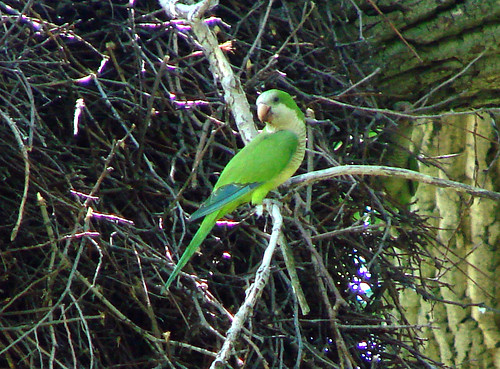
The Chicago population was established in the Hyde Park neighborhood in the early 1970s, and thrived until fairly recently. The City of Chicago tried to eradicate them decades ago, but people, including Mayor Harold Washington, defended them strenuously. My favorite place in Chicago to see them happens to be in Harold Washington Park. Currently their numbers there are dwindling, perhaps in part due to the reintroduction of Peregrine Falcons to the city, but their numbers are dwindling in many areas of the country right now, and scientists aren't sure exactly why.
So far the New York population continues to thrive. My
favorite place to see them there is anywhere my daughter happens to be, too.
I’ll be visiting Katie for a few days in December, and one of my hopes is to
see these cool parakeets again. With any luck, I’ll be able to enjoy seeing
them without a single thought about their poop.
